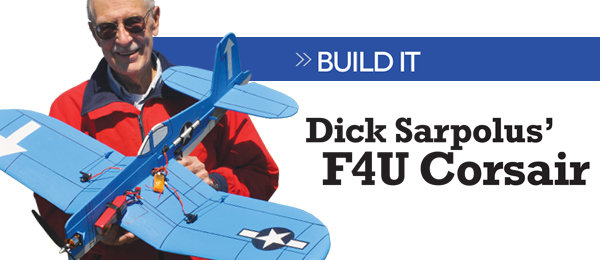
Park Solutions Article and photos by Randal Sordelet. Featured in the Summer 2011 issue of Park Pilot.
I make my living running a machine shop in Fort Wayne, Indiana, but I've spent my spare time building RC cars, boats and airplanes since childhood. I'm a big guy with big hands, and sometimes it's very difficult to perform a modeling task that requires a gentle touch. One of those tasks - difficult for you, but almost impossible for me - is inserting those tiny brass or aluminum eyelets into the rubber mounting grommets of an RC servo. It's an annoying job. The holes in the rubber are always too small, and the area around the mounting tabs is too tight for me to work with any finesse. What's worse is that at least one eyelet always disappears when I can't get it quite centered in the hole. I push on the eyelet, and the grommet rebels by pushing back and bouncing the eyelet off the ceiling. Have you ever tried to find a tiny object on the debris-littered floor of a busy machine shop? Other than servo eyelet installation, there's a specialty tool available for every task known to man. It was time for me to solve my dilemma and create this one missing tool.

Here they are, those rubber grommets and brass eyelets that help to cushion your valuable servos against damage from vibration.

After fitting the rubber cushioning grommets to each of your servos, the next step is to press the brass eyelets into the grommets from underneath.
I started with a wooden-handle screwdriver, cut the blade off, then turned the first few inches of the shank on a lathe to create a step to seat the eyelets. That step also prevents the eyelets from sliding all the way down the shaft, where the stubby handle won't let the tool get close to the servo case. I rounded the tip of a 3-inch length of welding rod, then drilled the screwdriver shank to accept it. The result is the simple Servo Eyelet Tool in the photographs. Using the tool couldn't be easier. Load all the eyelets for one servo on the end of the tool. Press them, one-by-one, into the rubber grommets with a slight rocking motion. Retract the tool and go to the next eyelet.

Randal Sordelet (Fort Wayne IN) created this special eyelet tool, but you can get the job done with any screwdriver that’s shank fits inside the eyelets.

Up to six eyelets can be loaded onto the end of Randal's Servo Eyelet Tool. The step seats the eyelets and prevents them from sliding down the shank.
Get those eyelets installed easily:
• Find a screwdriver with a blade diameter that is small enough to pass through your servo eyelets, or create your own eyelet tool. • Press the four (some servos use only two) rubber cushioning grommets into the ears of the servo case's mounting tabs. • Seat the grommets by rotating the round ones, and pinching the square and rectangular ones. • Prepare each grommet for the eyelet with a drop of light oil. • Install servo eyelets from under, never over, the mounting tabs. • Load up to four eyelets, bezel side down, onto the shaft (shank) of your screwdriver or your homemade eyelet tool. • Penetrate the grommet with the end of the tool, then use gentle pressure to work the end of the eyelet into the grommet, gently rocking it from side-to-side. • Retract the tool and the eyelet will remain in the grommet. • Always position your work so that gravity helps to keep the eyelets loaded on the tool. If you point the tool downward, the eyelets can slide off. • Repeat the simple insertion procedure for each of the three remaining eyelets. Repeat the entire process for each servo that requires grommets and eyelets. • Turn your aeromodeling friends onto this simple, time-saving problem solver. It will save their sanity - and their fingernails.Article:





